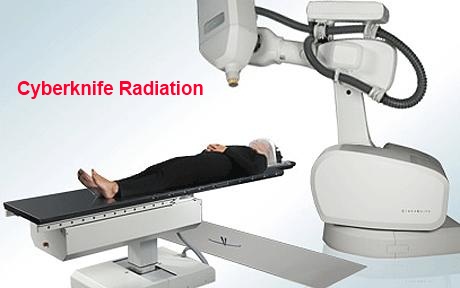Cyberknife Radiation Therapy
About Neuro Oncology ?
The challenge that doctors face in treating prostate tumors with radiation therapy is that the prostate moves unpredictably as air passes through the rectum and as the bladder empties and fills. Minimizing any large movements of the prostate can help reduce unnecessary irradiation of surrounding healthy tissue. The CyberKnife Robotic Radiosurgery System is able to overcome this challenge by continuously identifying the exact location of the prostate and making active corrections for any movement of the prostate throughout the course of the treatment. During treatment, a patient lays still and breathes normally while the CyberKnife zeroes in on a moving target – the prostate – and irradiates it without harming surrounding areas. As a result, the procedure is more comfortable for patients, radiation is delivered more accurately and treatments can be completed in four to five days.
Currently the CyberKnife Radiosurgery System is most frequently used by itself for patients with early stage prostate cancer confined to the prostate or in combination with another therapy, such as external beam radiation for patients with disease that extends beyond the prostate. Depending on the stage of the patient’s prostate cancer the doctor will recommend a treatment plan.
Over a dozen clinical experiences have been published to date on CyberKnife prostate SBRT. At 5 years after treatment a recurrence-free rate of 93% has been reported. Recurrence-free rates of 100% at 44 months, 97.5% at 51 months, and 94% at 4 years [48] have also been reported. Toxicity has been quite low; rates of grade 2-3 toxicity at 20-60 months after treatment range from 2-10% for urinary toxicity and 0-5% for bowel toxicity. Erectile dysfunction has ranged from 60% at 35 months for an early experience to 13-40% at 1.5-3 years for more recent experiences in which the prostate gland is delineated with the aid of MRI which typically reduces the volume of the region exposed to radiation.

What does a typical CyberKnife treatment entail?
Once the team is in place, the patient will begin preparations for CyberKnife treatment. As part of their diagnosis, doctors will have measured prostate specific antigen (PSA) levels via a blood test that will be used to help track treatment results. Prior to CyberKnife treatment, patients will be scheduled for a short outpatient procedure in which three to five tiny gold seeds – called fiducial markers – are inserted into the prostate. The fiducials are placed through a needle, which is guided via an ultrasound. Patients may be asked to clean out their rectum with an enema the day of the fiducial placement.
While lying in the cradle, patients will undergo a CT scan. This CT data will be used by the CyberKnife team to determine the exact size, shape and location of the prostate. An MRI scan also may be necessary to fully visualize the prostate and nearby anatomy.